How to Improve Your Drawing Skills?

Hello everyone, like many illustrators, you have probably thought to yourself: “I don't know what to do to improve anymore” or “I am not improving”. This feeling is part of the learning process, but sometimes it can be totally depressing and make you lose motivation to progress. In this article, I will offer you 10 tips for effective improvement in drawing, which will give you ideas for continuing to make progress in your learning.
Prepare your pencils, your paper or your tablet, and most importantly, your creativity!
DRAW REGULARLY
This first piece of advice may be one you've already heard the most; it's constantly repeated and not without reason, as progress comes with consistency. However, it's important to understand that consistency and intensity are two different things. To improve, you don't need to draw 8 hours a day every day; you just need to find a rhythm that suits you. For example, if a child chooses to practice a sport from an early age every Wednesday afternoon, they will inevitably improve over time because their practice is consistent, even though it's only for 1 to 2 hours a week.
It is clear that the more often and the longer you practise, the faster your progress will be, but as they say, “the best is the enemy of the good”, so above all seek a pace that suits your personal development. In addition, it is not necessary to make drawings that are too complex, with many perspectives and details: you can create very good drawings in a short time and improve considerably that way.
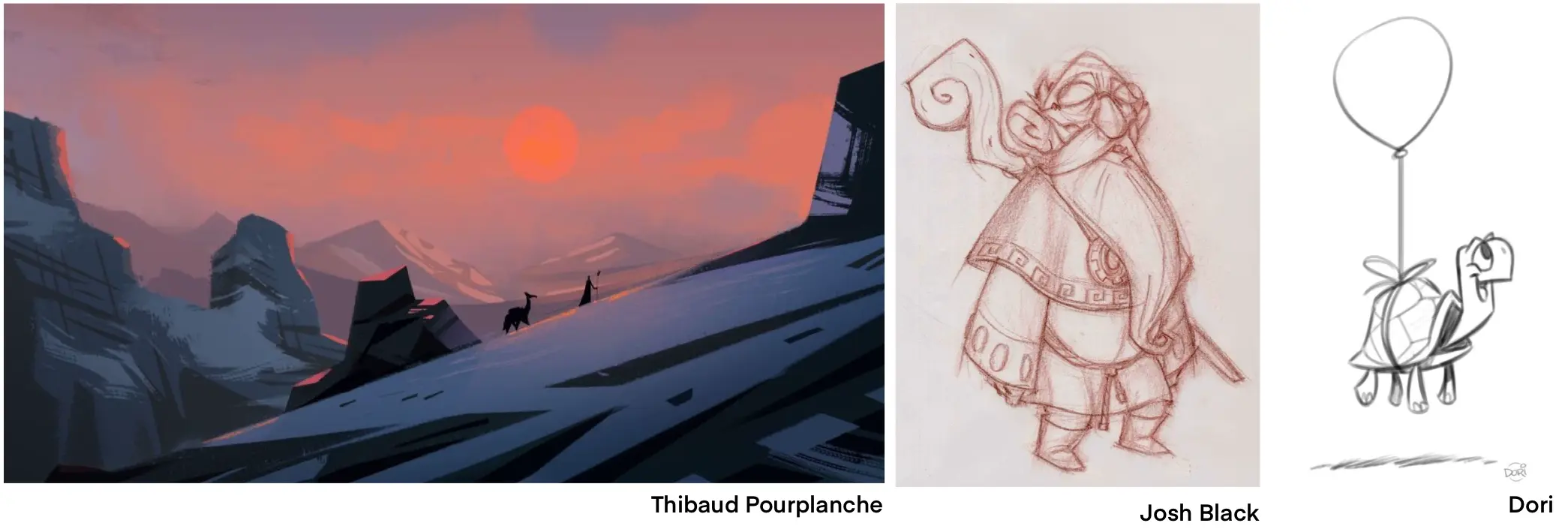
STRENGTHEN THE FOUNDATIONS
This advice may seem obvious, but it is one of the first we realise and often avoid applying because it confronts us with our challenges. However, it is essential: up to a certain point one can progress without the basics, but these will be necessary to continue advancing and the later one acquires them, the more complex they are to integrate.
I'll take my example, which is very common. I put off learning anatomy for a long time (especially hands). I found plenty of "cheating" solutions to make it less noticeable in my work (drawing aliens, hiding the hands, using loose clothing)... As a result, I reached a point where the anatomy of my characters was significantly lacking compared to my other skills, and I had to start all over again. It was harder to relearn from the wrong basics than if I had learned properly from the beginning.
There are numerous basics (anatomy, perspective, composition, colour...) and even though you may progress at different levels depending on your own abilities, it is very important to work on all of them for a consistent progress curve. The time spent initially will be largely rewarded later.
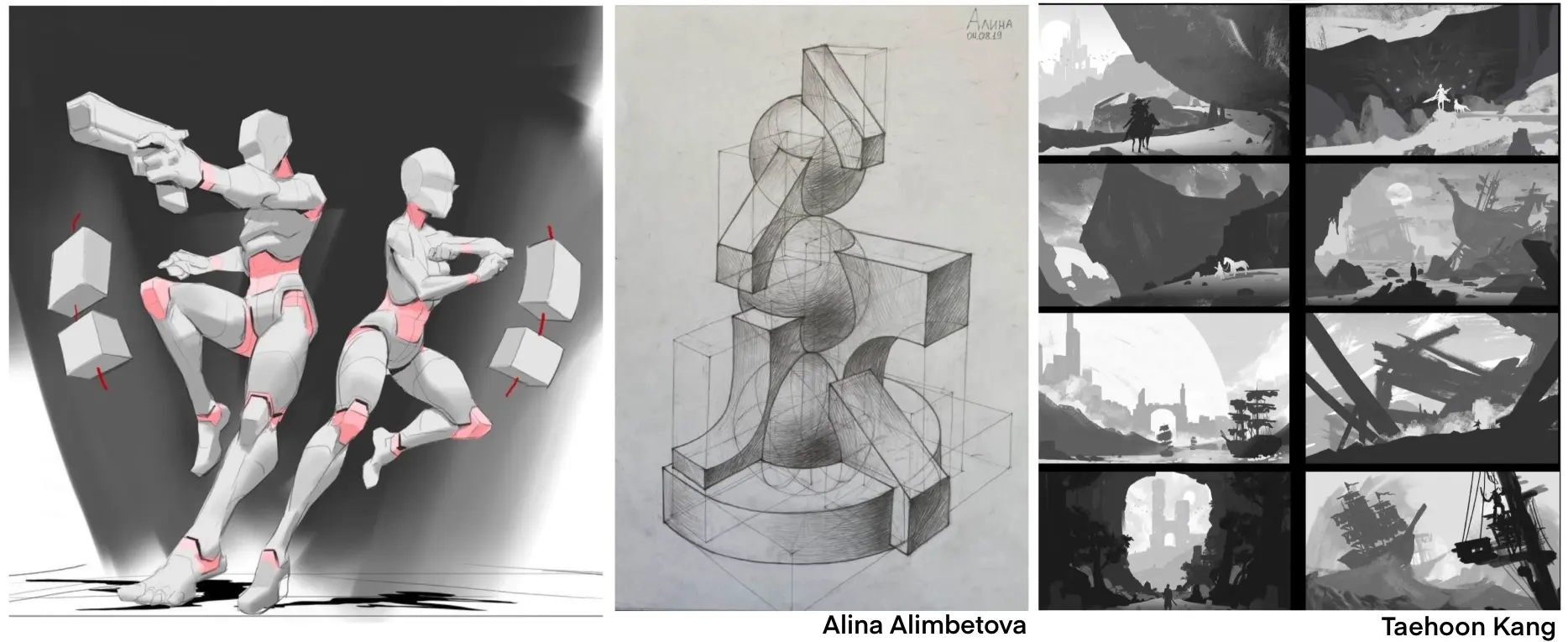
OBSERVE THE WORK OF OTHERS
When I talk about observing the work of others, I am not talking about comparing yourself, there will always be someone better and worse than you. By looking at artists you like, you can find inspiration through their designs (without plagiarising their work) but also learn from their way of doing things. By observing, we educate our eye, teach it to recognise what works and what does not work. This also allows us to better understand certain theories when we see them applied by others.
Observing can also help you expand your inner database and cultivate your creativity; you will remember how it uses colours, lights, composition… lots of things that will enrich you and that you can later put into practice in your own creations.
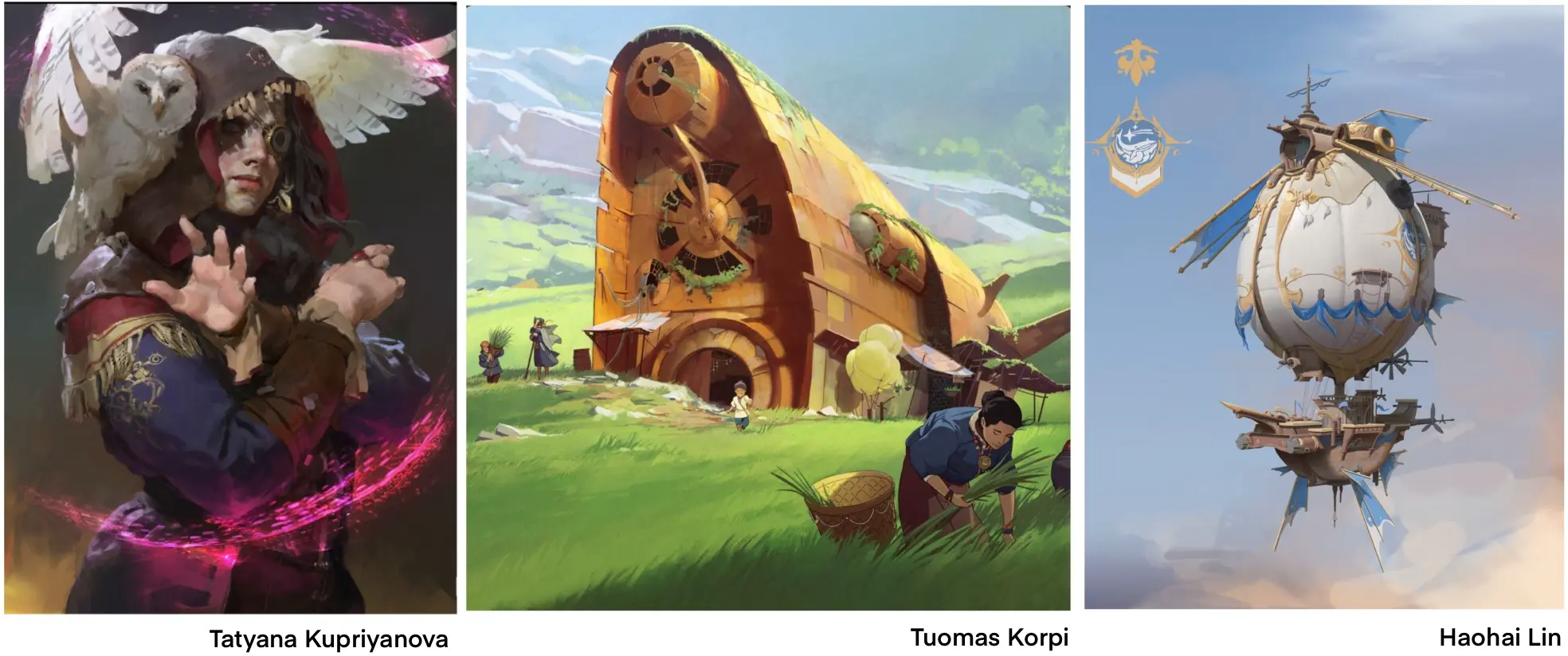
EXCHANGE WITH OTHER DESIGNERS
One of the most effective ways to improve is to get feedback from other artists; the goal is not just to receive feedback of "it's successful" or "it failed". These judgments may please you or hurt you, but they won't help you truly gain perspective on your drawing and progress. It's very important when learning a field to be able to exchange with others who will be able to tell you the aspects you succeeded in and those that need improvement. It can also be very interesting to give feedback to others; you will be able to observe their work and identify points to improve and those that are good (again, this helps develop your eye).
There are many places to communicate, especially on social networks, but I encourage you to choose forums that offer a space truly dedicated to interaction with many specific categories:https://dessindigo.com/forum
EXPLORE DIFFERENT MEDIUMS FOR DRAWING
Another great way to improve in drawing is to take an interest in something other than drawing; it may seem contradictory, but it is often surprising to see how some creative fields meet and complement each other.
When we become interested in other creative mediums, we develop skills that will be very useful to us in drawing and sometimes it is easier to improve them because there is a form of surrender due to the discovery of this new discipline.
For example, photography allows one to improve in framing but also in lighting. Painting helps to better understand colour theory and its application. Sculpture is excellent for developing a good understanding of depth and volume...
Exploring different mediums is fun, playful, and develops many skills, so do it!

THE IMPORTANCE OF STORYTELLING IN YOUR DRAWINGS
The term storytelling is an Anglicism that literally translates to "narration of story", which concretely means that you bring elements to your drawing that, put together, tell a story and make it believable.
Storytelling can manifest in many ways (and often, they are all interconnected): lighting, colours, composition, characters, setting, details... the entire image serves the story it tells.
To improve in storytelling, simply create a small story around our drawing, even a simple one, and try to portray it as if our drawing were a photo taken at a moment in our story.
Bringing storytelling to your drawings will quickly help you progress creatively and allow viewers to easily immerse themselves in your world and understand it.
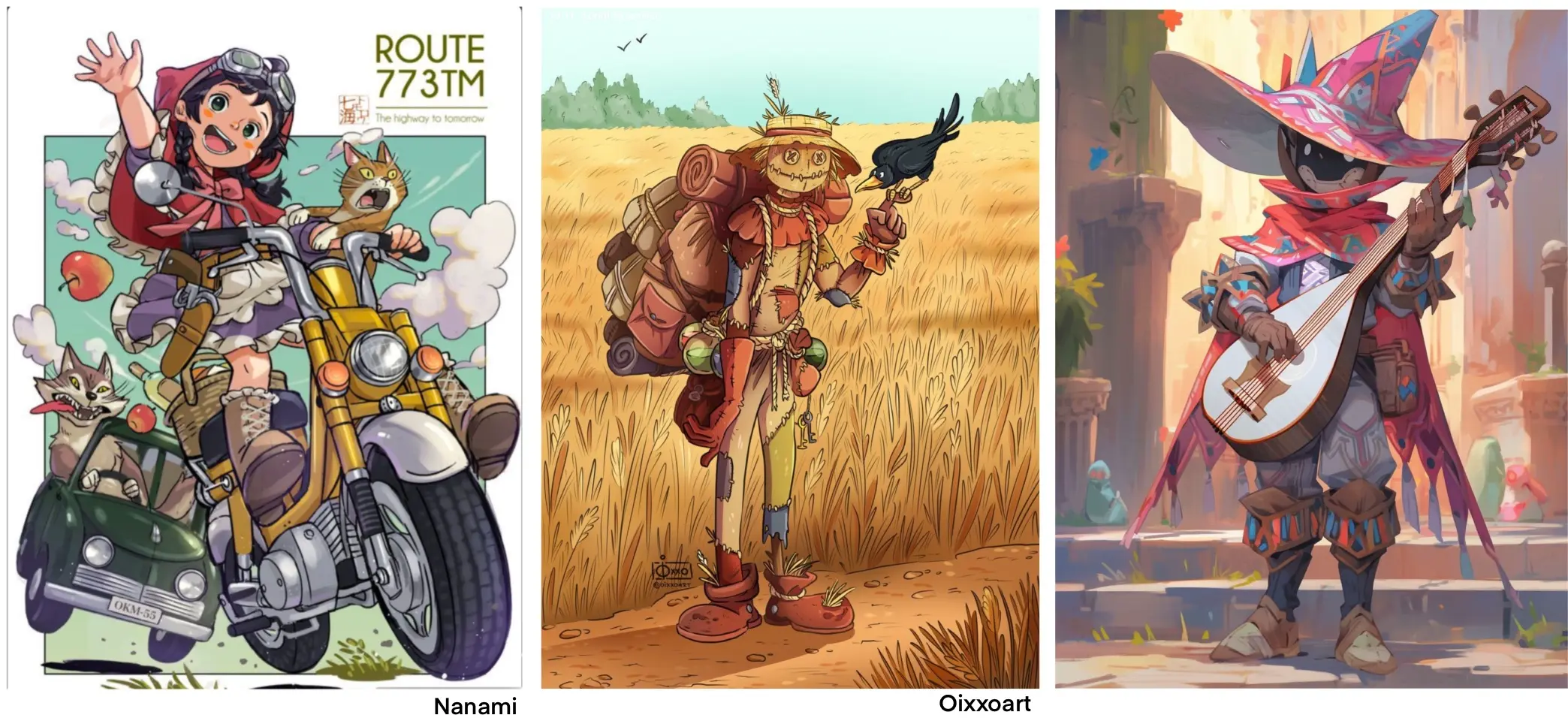
USE REFERENCES FOR YOUR DRAWINGS
Using references allows for very rapid progress, nourishes creativity, and (again and again) hones one's eye. I'm not talking about copying existing drawings because even though that can be a good starting point for beginners, the learning derived from it is less compared to when you use references and adapt them to your drawing. The reference serves the drawing, not the other way around.
Many are reluctant to use references because we tend to feel less legitimate than when making a drawing that is completely from our imagination, and yet this is completely false. Even professionals with over 15 years of experience use references, which can sometimes be used to find a posture, an expression, colours or lighting, or even for details, the positioning of a muscle, the finishes of a garment... In short, the reference is an indispensable tool to help us when we draw.
It is important to understand that we never invent anything 100% (even if we would like to!) so why deprive ourselves of such a wonderful tool as reference?
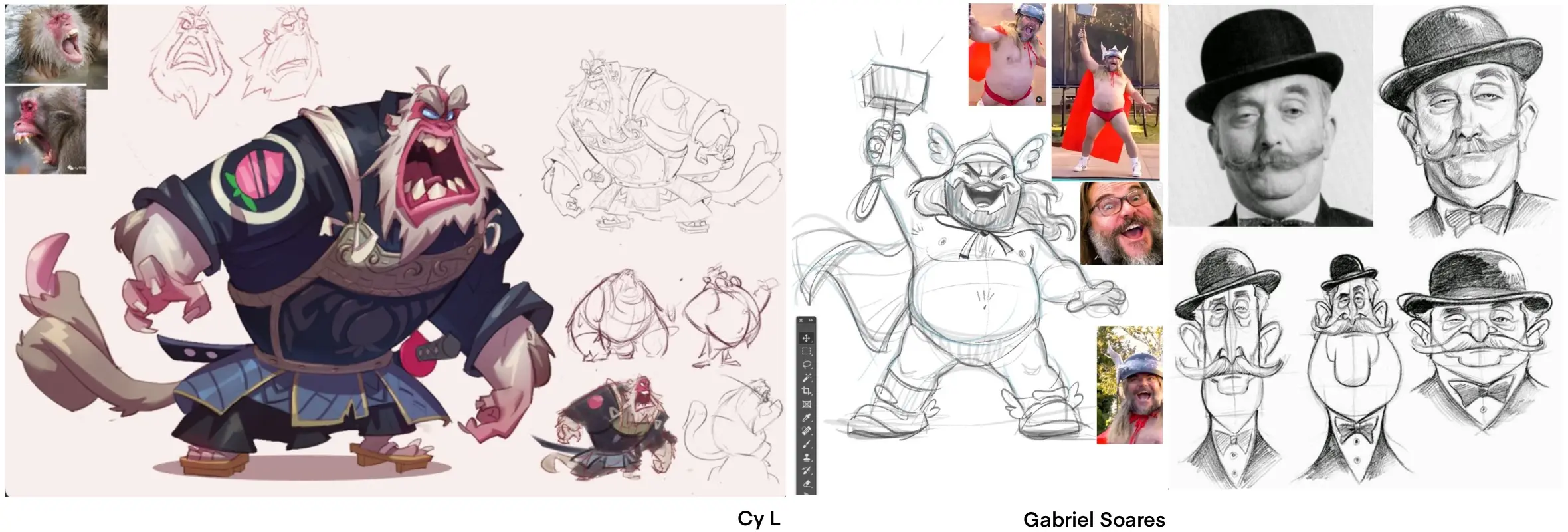
VARY YOUR TOPICS TO IMPROVE
When we draw, we all have our favorite subjects (animals, portraits, characters, vehicles, scenery, buildings…) it's easy to get locked into one type of drawing because we like it and forget the others, yet few subjects allow developing all drawing skills (anatomy, perspective, composition, storytelling…).
By stepping out of your comfort zone and expanding your drawing subjects, you will deepen your knowledge that will allow you to create even more complete and exciting illustrations. And who knows, maybe you will be surprised to find new favourite subjects where you least expect it!

THE SKETCHBOOK
The famous sketchbook! You've probably already heard a lot about it, it’s one of the main things recommended for improvement and rightly so! The sketchbook allows you to lay down your ideas, make observational drawings, do tests, in short, it’s a comprehensive tool whose main purpose is to make quick sketches that are often not fully completed.
The idea with a sketchbook is to observe and experiment. It ties back to tip no. 1 on the consistency of practice; even if your drawings are made in 30 seconds and with quite a few mistakes, it's not a problem, on the contrary!
The more sketches you make, the more naturally you will find ways to better represent your ideas, to be more precise and efficient in your lines. Moreover, it is an excellent way to keep ideas for more finished drawings and to watch your evolution over time; in short, a truly very interesting tool!
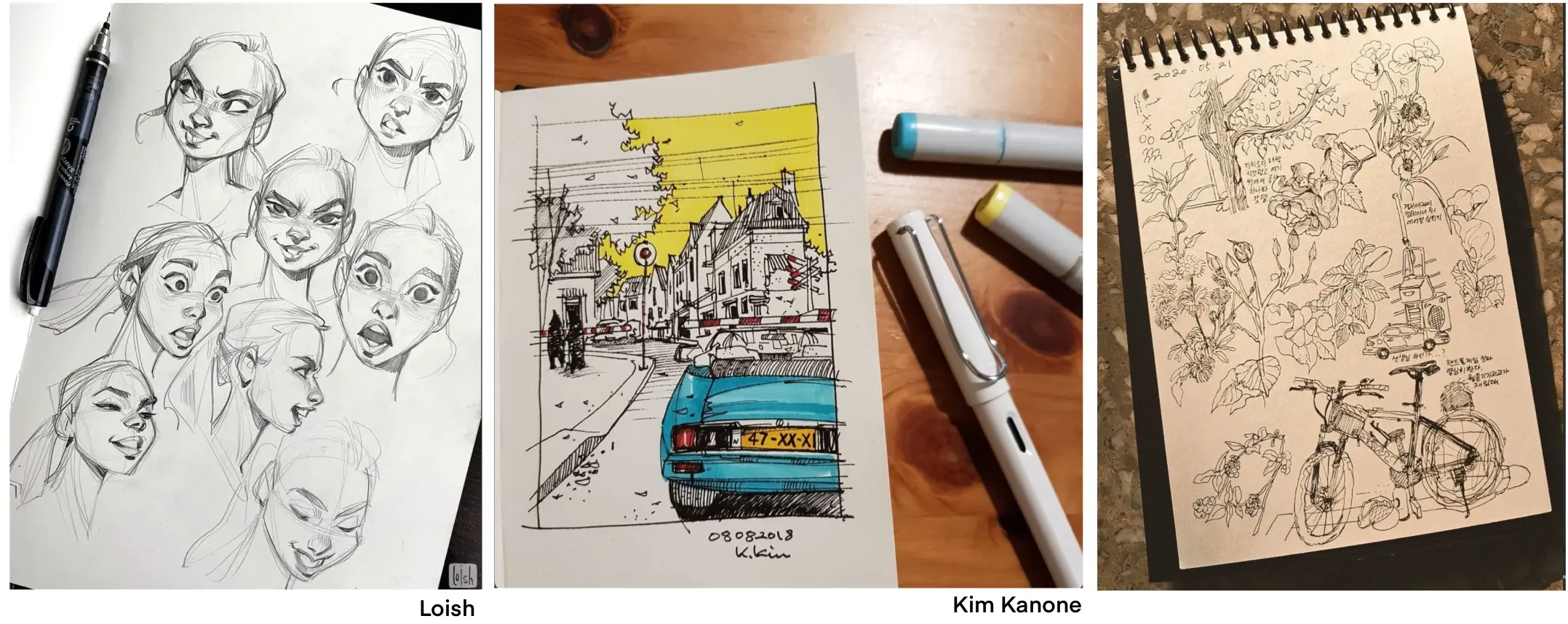
PERSEVERE AND TIME WILL DO THE REST
This last piece of advice is undoubtedly the most important of all, not because it gives you learning tips, but because ultimately, the only thing that will really make you progress in drawing is time. We quickly learn certain theories but it always takes time to fully integrate them and see their impact on our drawings. It's a bit frustrating because we would like each drawing to be an exceptional leap forward, that our progress is quickly visible, but as they say "Rome wasn't built in a day" and the same will be true for your progress in drawing.
There is an exercise that can be interesting if you want to observe your progress. Look at your old drawings (even if they were made only a year ago) and try to redo them with the knowledge you have gained since then; you will see that the progression is often much more impressive than you think and is always a good source of motivation to keep going.
Some artists even choose to redo the same subject each year to have a clear evolution from one year to the next and to be able to set new learning goals accordingly. Persevere, time will do the rest!

BONUS TIP: ONLINE COURSES
I couldn't end this article without telling you about online courses, accessible from your home, which allow you to access lessons or tutorials that will enable you to delve into certain topics (such as the basics) at your own pace and with stable teaching support that will help you progress step by step.
This allows you to be guided in your learning with courses and practical exercises that you can put into practice in your drawings, ideal for making serene progress.
We have been able to see through this article several tips and lines of work so that you can progress in drawing. I invite you ideally to put them all into practice to see quick results, but you can also choose a few to work on and come back to the others later. The main thing is to practice regularly, to accept your mistakes and to correct them gradually, and above all to enjoy drawing!
I hope you enjoyed this article! 😊
Illustrator and writer: Chloé Pouteau


Very good advice, thank you 🙂!
I'll take note and try to apply them 😉
Thank you for sharing your ideas in this blog post. Your comprehensive analysis and engaging writing style made for an informative and enjoyable read. The depth of your research and the clarity of your arguments were particularly impressive. I look forward to reading more of your work in the future!
Your instructions are very detailed, I will try to apply them
Hello everyone! Thank you for this enriching article on improving in drawing.